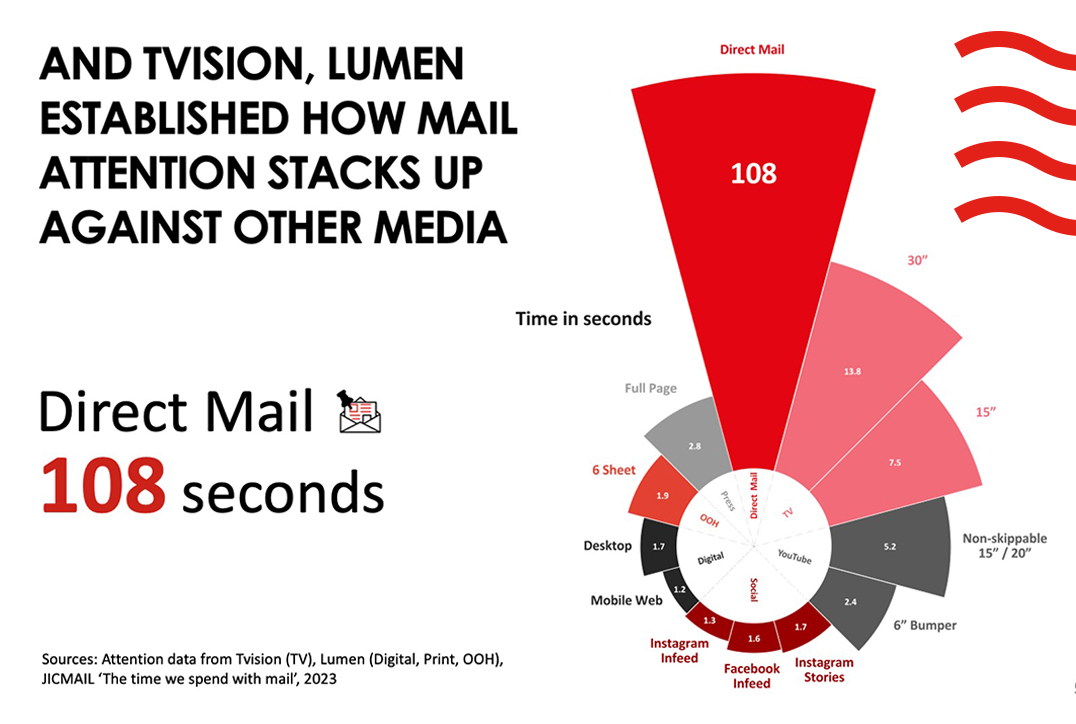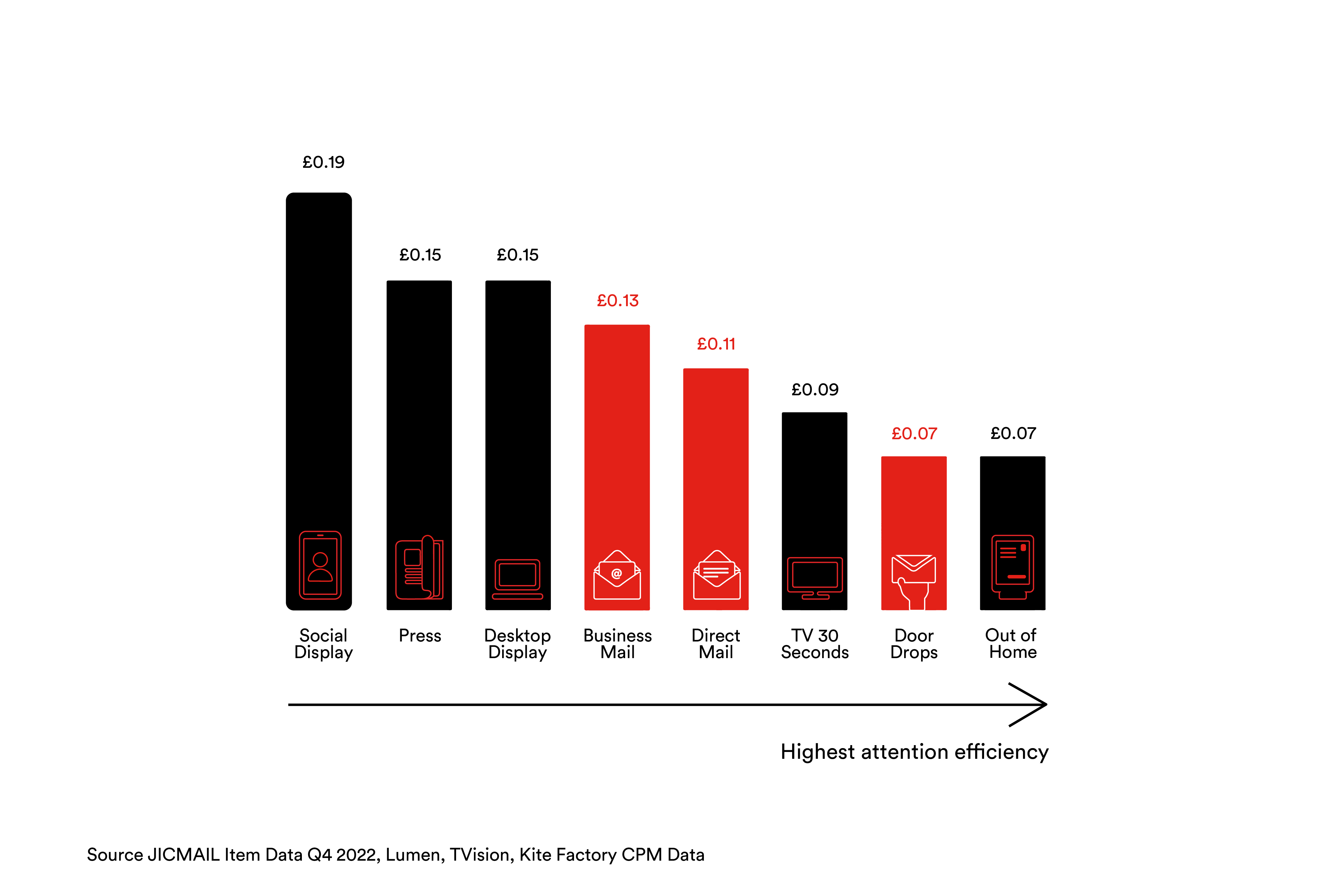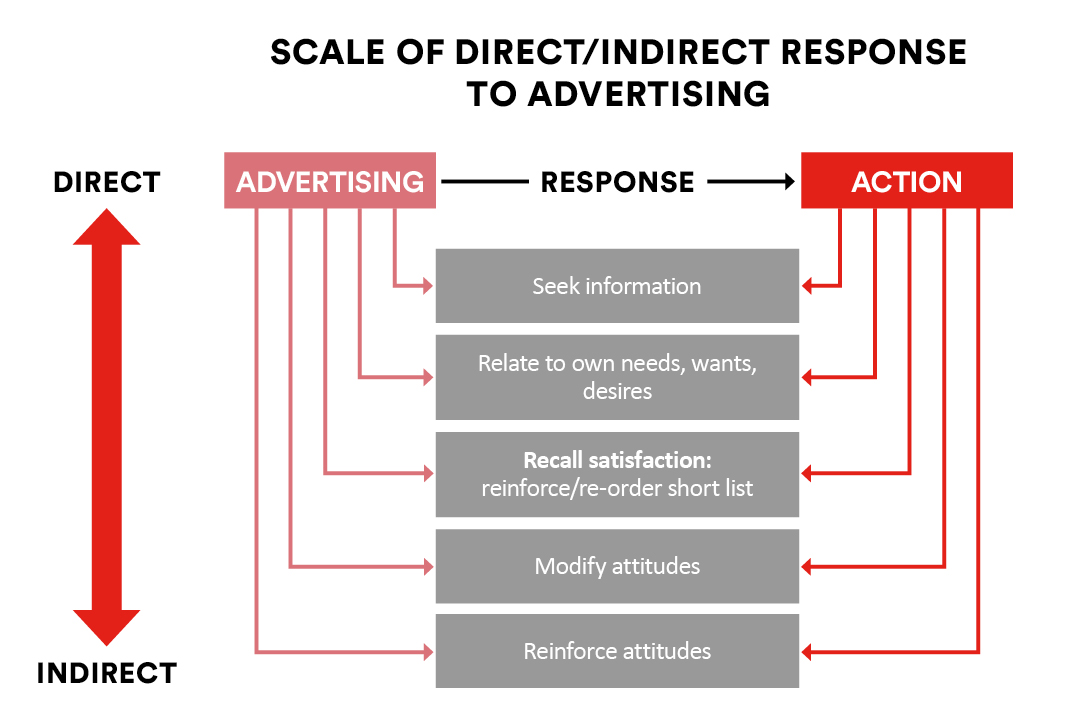One Thing Leads to Another: The Marketing Attention Rub


What happens when someone sees an ad?
Paid Attention author Faris Yakob looks at new attention and behavioural research from JICMAIL that demonstrates how one media encounter can move the consumer to another and how marketers should be planning for it, especially considering the unique properties of mail.
What happens when a person sees an ad? What is the intermediate impact of marketing in the middle, if not solely shaping memories for long term effect or driving an immediate sale?
These seemingly simple questions are extremely hard to answer and the paradigms that have become embedded into the marketing industry make it easy to get confused about actual human behavior.
The fiction of the funnel leads us to believe that consumer journeys are linear and thus each advertisement works to move people down that funnel. We know this isn’t the case. Humans intuitively understand that they bounce up and down the funnel like a game of snakes and ladders. Google describes this as the ‘messy middle’, in which we “seamlessly switch between complementary states of “exploration” and “evaluation”. This means any interaction as well as anything else in the larger context of their life, may move them up or down the funnel. Google implicitly sees itself as the connection point between mass media advertising and brands, the caretaker of that messy middle, hence the term and the research. One indirect effect advertising can create on the way to a sale is to trigger someone to seek out information. Google has always been clear that TV advertising triggers increases in searches and traffic for the brand - any interaction with any touchpoint can lead to another experience, depending on what a person chooses to do.
Smart marketers and agencies have always understood this. Back in its heyday, the pioneering UX & comms planning teams at the ‘agency of the (last) decade’ [Adage] Crispin Porter Bogusky, developed a principal called “no dead ends”, which meant that every piece of advertising can connect to another touchpoint, owned or paid.
Understanding secondary impacts is intrinsically hard. We don’t know what people do after consuming ads beyond what they tell us and the variance in sales. Historically we knew magazines got passed along and stayed in-market for a long time due to the ‘waiting room phenomenon’ and therefore only achieved their maximum reach after about a year. Arguably these forms of intermediate behaviour are not appropriately considered in the unhelpful binary world of brand versus performance marketing, with their consequent measurement methodologies. Fortunately, new research from JICMAIL can elucidate this effect as well as the unique features of mail in all its varied forms. The report, The Time We Spend with Mail, helps dimensionalize how mail works in the home and the data has been rolled into their new planning tool: Discovery 3.0.

Since my book Paid Attention was first published in 2015, attention research has gone from a concept to specific methodologies and metrics. Companies use proxies like the movement of phones and eye tracking to increasingly understand how different media are actually consumed and plan accordingly. There is little point in putting 60 seconds of film into media channels that only get one or 2 seconds of average attention. The JICMAIL study is a masterful piece of research, which is valuable considering the often overlooked role of direct mail among traditional media planners, despite it being bigger than Channel4 in terms of revenue (UK). In terms of attention, direct mail commands 108 seconds of attention on average, which dwarfs the <2 second attention thresholds for most social display advertising.

The year-long project had four stages, including verification from PWC, with the final stage validating the results from the panel by using AI powered cameras in homes to see what people actually did with their mail and when. The results are conceptually fascinating to me since I don’t think I’ve seen planning tools that can be measured and optimised by specific behavioral and commercial outcomes, across segments and media vehicle type, in this way, rather than through econometric inference. Mail delivers substantial amounts of solus attention since it isn’t competing with other content around it like an ad in stream. When combined with data benchmarks from TVision and Lumen, JICMAIL demonstrated that mail performs very well in terms of cost per minute of attention.

Attention measurement has been a vital contribution to understanding the nature and attention thresholds of media and therefore has significant cost implications for media planning and buying. However, as JICMAIL points out:
"Attracting consumer attention is not an end in itself. For attention to be established as a marketing metric of value, it needs to be proven that it is linked to effective outcomes."
Any media exposure can trigger an action but now we can see that mail triggers a host of different behaviors over different time periods, which allows for enhanced attention planning towards desired outcomes. They characterize this effect as the attention rub: “Attention to a print message like mail, can create attributable attention to owned assets like physical stores. The usage of QR codes to drive in store appointments and foot fall is one such example.”

The tool allows you to get real visibility into that messy middle part of the marketing funnel for mail. The research highlights physical actions like open rates, of course, (by sector, audience and mail type), whether it was looked at all, how long it is kept in the home, if it is put on the fridge, who it gets passed on to and whether they took the mail to work. That’s pretty cool but they also have data on ‘commercial actions’ which include coupon redemption, discussing it with someone, going online to look it up, or visiting the brand’s website.
“Mail prompts significant amounts of time online, with over five minutes of website usage on average generated by items prompting digital traffic. Mail doesn’t just drive response, it drives customer engagement with owned channels.”
Ay, there’s the rub!
That said, when planning for attention it is key to understand what you are trying to achieve and what attention thresholds might be required. “Some commercial actions don’t need long to take effect. It only takes 6 seconds to tear off a voucher from a mail item, but over a fifth of respondents had used vouchers in the last few weeks.”
Marketing is ultimately about changing behavior using all the various levers available across paid, owned and earned media and beyond, through pricing, distribution, partnerships and more. We have come to believe that there is something we call a ‘consumer journey’, which is a convenient fiction, a way of thinking about the complexity of human decision making and behavior entirely through the lens of a single brand or category that people probably spend vanishingly little time thinking about, in most categories. We create interventions and then we look to measure effects to see if they are triggering immediate sales increases or building mental availability and brand equity. Now we can more accurately consider the other parts of those journeys and examine the host of intermediate behaviors that advertising triggers towards a sale. There are more things in the life and minds of people than are dreamt of in our consumer journeys. It’s always important to consider the behavioral impacts of media exposure because most people are not in-market most of the time for most things so they aren’t on a consumer journey for your product, but they might be intrigued enough by the advertising or the product to have a quick look-see. Indeed, the father of account planning Stephen King made it very clear in his 1974 planning guide, that most ads work indirectly rather than leading directly to a sale, in a host of ways.

The closest direct response for general advertising, which is to say not direct response, he could envisage was seeking information because he intuitively understood that most advertising people consume doesn’t lead to an immediate sale. Now, if we want someone to go to a website to seek information to move them along that ‘journey’ we can plan for exactly that, which forcibly reminds us that paid and owned media or customer experience cannot be considered separately for maximum efficacy.
“Paid and owned channels do not operate independently. There is a synergistic effect that works across all channels and which drive impact throughout the customer lifecycle. It is crucial to understand the role different channels play in acquiring new customers and engaging existing ones.” The Attention Advantage report (authored by WARC and featuring insight from luminaries like Geoff de Burca, CSO at EssenceMediacom, and Mike Follett, the founder of attention research pioneer Lumen) highlights these different roles, with evidence, insight and approaches to apply to your attention planning for maximum impact.
It contextualizes the JICMAIL research inside the current mediascape broadly, considering both how the channel and formats work and, crucially, what happens next.

The attention rub exists, in varying degrees, for all media and brand interactions and thus considering how it features into your communication plans, how the components of those plans interact inside and outside the brand, is crucial for modern marketing.
Eventually everything connects, as design legend Charles Eames once said. Solving for the integration problem is the rub in a more Shakespearean sense of being a problem, but understanding the attention rub will help us all connect the dots.
Get creative inspiration, thought leadership and free resources on the magic of mail from Marketreach here!
Want more like this?
Want more like this?
Insight delivered to your inbox
Keep up to date with our free email. Hand picked whitepapers and posts from our blog, as well as exclusive videos and webinar invitations keep our Users one step ahead.
By clicking 'SIGN UP', you agree to our Terms of Use and Privacy Policy


By clicking 'SIGN UP', you agree to our Terms of Use and Privacy Policy
Other content you may be interested in
Categories
Categories
Categories

Want more like this?


Want more like this?
Insight delivered to your inbox
Keep up to date with our free email. Hand picked whitepapers and posts from our blog, as well as exclusive videos and webinar invitations keep our Users one step ahead.
By clicking 'SIGN UP', you agree to our Terms of Use and Privacy Policy









